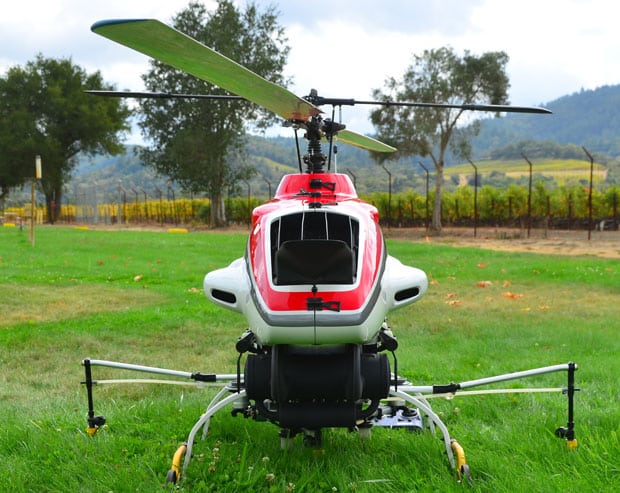With the development of new methods and technology, the main concentration of researchers is to provide unmanned vehicles or robots that can venture into far off places and analyze critical situations thus providing a manner in which human life is not exposed to any risk. Till now humans had to risk their lives to analyze critical scenarios and parameters which sometimes could turn out bad and contribute to death toll. So many drones have been invented to provide this functionality. Nearly two centuries have passed since the beginning of mechanization of farming. In the staring primitive tools were used to facilitate better farming methods. Then came the complex machines like threshers which reduced the time and increased the efficiency manifold. Even after so many innovative steps there are yet some tasks that have to be done by human hands like spraying, seeding etc. And to automatize these YAMAHA has produced RMAX helicopter which is completely unmanned.
Yamaha and UC Davis put on a demonstration of the RMAX unmanned helicopter in Napa Valley, in the heart of California’s wine country. Yamaha’s RMAX is basically a scaled-up version of a nitro or electric hobby sport helicopter, or a scaled-down version of a real helicopter. It’s beastly enough to carry a 28-kilogram payload, and Yamaha has it set up to spray vineyards. It’s complex and expensive, but the company is making a case that it’s the most efficient and cost effective way to treat high value crops, especially with an eye towards autonomy. Yamaha national sales manager Mike Johnson said helicopters were suited to rice farming because they allowed farmers to get weeds in hard-to-reach areas, such as boggy terrain or over water courses. The idea of using the helicopter for chemical application was conceived in Japan in the 1980s. Mr. Johnson said about 2600 similar aircraft operate in Japan to spray small rice paddies, with another 100 in South Korea.
The helicopter doesn’t compact ground and can be used over wet fields. The spray capacity is low. The liquid sprayer tank holds less than 4 gallons, and the application rates are more typical of aerial i.e. 1-5 gallons/acre than ground application i.e. 25-100 gallons/acre. The Federal Aviation Administration (FAA) tightly regulates the use of unmanned aircraft, and the aircraft can be used for experimental purposes only. The FAA has approved Yamaha’s partnership with UC Davis to conduct experimental flights for data collection and demonstration for agriculture uses such as in the Napa vineyards. The project is receiving FINANCIAL support from Yamaha. The RMAX unmanned helicopters are regulated by the Civil Aviation Safety Authority of Australia, with each business and pilot required to be licensed by the CASA to operate in Australian airspace. Pilots also need to be licensed by the local authority for aerial application. The massive breakthrough of the RMAX though, was its Yamaha-exclusive flight attitude control system YACS, characterized by its vastly improved ability to hover stationary position, and that complete novices could fly the machine. Real helicopters are very hard to fly.

